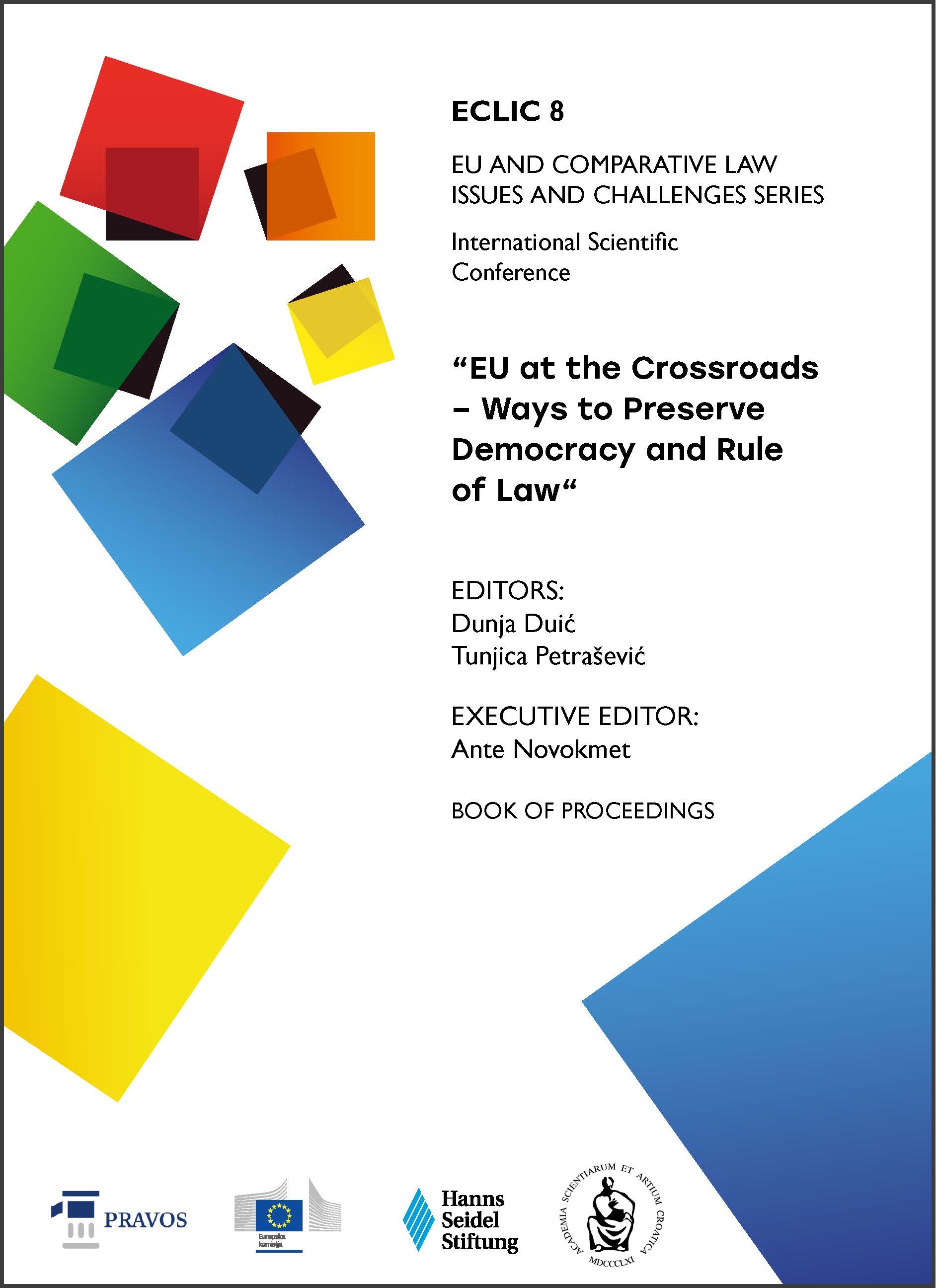THE RULE OF LAW IN SPATIAL PLANNING AND BUILDING
DOI:
https://doi.org/10.25234/eclic/32314Abstract
As stated in the Venice Commission Report, the rule of law embraces several aspects, such as legality, legal certainty, prevention of abuse (misuse of powers), equality before the law and non-discrimination, and access to justice. Stability and consistency of law and legitimate expectations as a part of legal certainty are key factors in every democratic country. However, even for countries where democratic standards are highly developed, achievement of all aspects of the rule of law can be a challenge.
Areas such as spatial planning and building are very dynamic in their core. However, this should not be an obstacle for stable and long-term regulation. Western democracies are characterized by the long-lasting acts and other regulation in building and spatial planning. Croatia, however, has constant changes in the basic regulation covering mentioned areas. For example, in issuing a building permit, the procedure can be so long lasting that all the relevant regulation may change in the meantime. This affects the investor, the owner of the property and possibly infringes their constitutional rights. Since the issuing of a building permit is in the area of administrative law, the aim of this paper is to analyse which constitutional rights may be affected during frequent changes of basic regulation. The other aim is to research and analyse whether national bodies and courts protect constitutional guarantees in administrative proceedings, and if not, what are the reasons for such practice.
This paper is divided into five sections: background and regulatory framework, the rule of law in spatial planning and building, right to a fair trial, protection of property in administrative matters, and conclusion.
Methodology used in this paper is normative, comparative, teleological and deductive. The research includes relevant regulation and available domestic and case law of the European Court on Human Rights. Paper is based on domestic and international documentation issued by relevant bodies, such as European Commission Reports, Venice Commission Report, etc. Teleological method is used for interpretation of the regulation and deductive method for the conclusion. Teleological method is used also for recommendations regarding a better application of the principle of the rule of law.
Downloads
Published
How to Cite
Issue
Section
License
Copyright (c) 2024 Mateja Held

This work is licensed under a Creative Commons Attribution-NonCommercial 4.0 International License.
Authors retain the copyright on the papers published in the Journal, but grant the right of first publication to the Journal. Papers accepted for publication or already published in ECLIC of the Faculty of Law in Osijek may be published by the author(s) in other publications only with proper notice of its previous publication in ECLIC.


